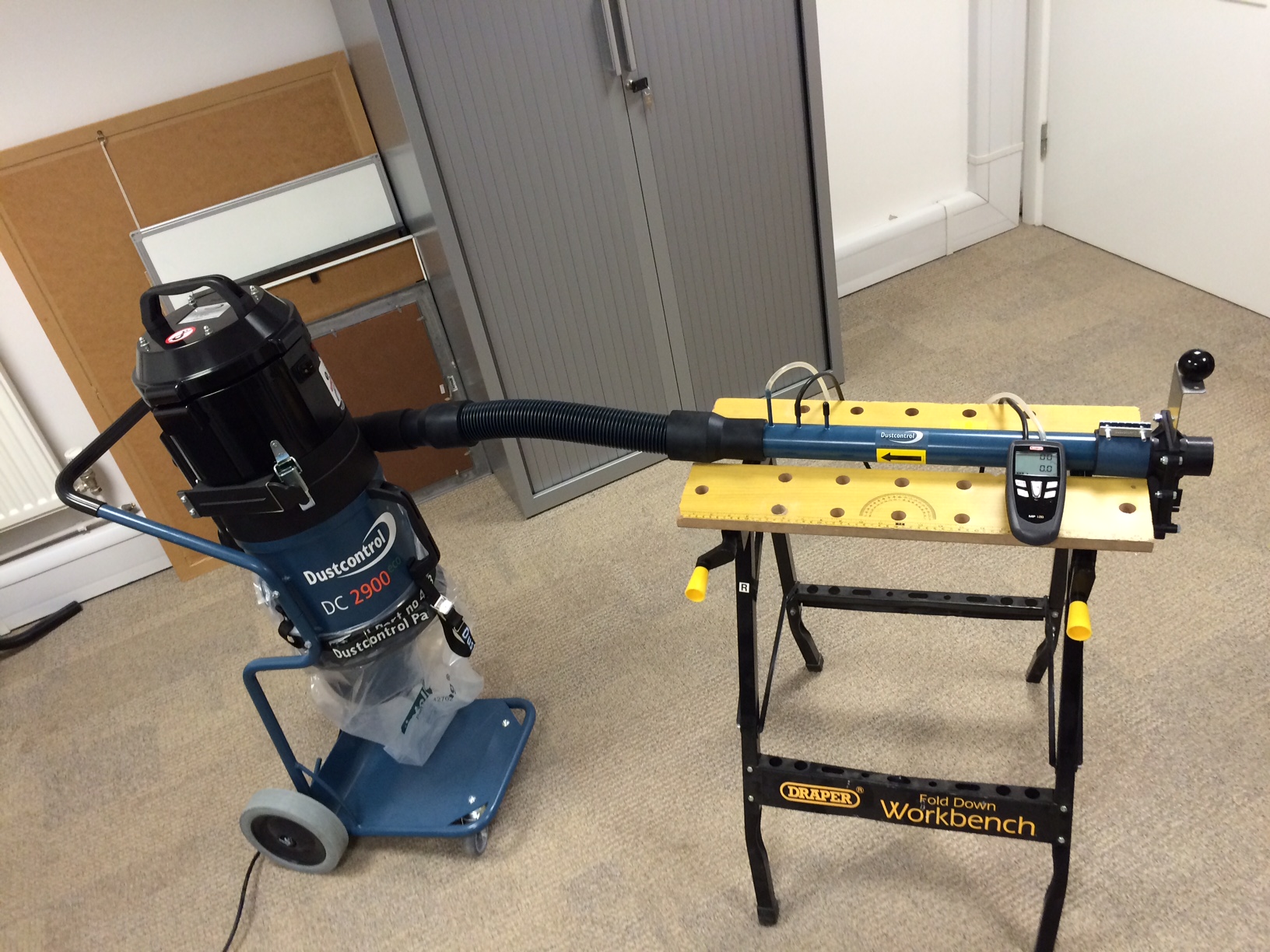Over the past 15 to 20 years, there has been a lot of development on construction sites with on-tool extraction to help combat the significant respiratory risks airborne dusts can present. They are responsible for a major proportion of the non-asbestos lung diseases including cancers, that can develop from long-term exposure.
The construction industry and its supply chain, however, were unclear about what the HSE expected in relation to selection, use, and maintenance of industrial dust extraction units. As a result, the HSE had a comprehensive review of on-tool extraction in late 2011/early 2012 within the construction industry, laying the foundations for the CIS36 and CIS69 documents that relate to the control of dust when using on-tool extraction.
From the results of research into equipment testing and service procedures in the hire industry, and with the increase in use of on-tool extraction in the construction industry, it became clear that more education was needed in the correct use of on-tool extraction. This included how to correctly service and maintain the extraction unit, so it is fit for purpose and offers the correct protection to workers. This led to the thorough examination test – TExT.
After many discussions with industry bodies and backed by the HSE, the HAE wrote a code of practice in relation to the servicing and maintenance of mobile dust extraction equipment to adhere to the TExT. Part of the examination, for example, involves checking the low flow warning system on the dust extractor. It is mandatory for all M (medium) or H (high) Class dust extraction units, that are required to be used in most construction applications, to have a low flow warning either by audible alarm or visible warning light/analogue pressure gauge.
TExT testing only relates to industrial vacuum units if they are to be used for on-tool extraction, for example, being attached directly to a power tool. If the purpose of the machine is solely used for vacuum cleaning, a LEV test is not required.
Many construction activities such as grinding, finishing, polishing, mortar removal, sanding, and cutting, produce large quantities of dust including materials containing silica and wood dust. These inhalable and respirable size particulates can cause exposure exceeding UK occupational exposure limits if uncontrolled.
Therefore, it is important when working with these materials that workers adhere to the law for the control of dusts. The main legislation covering construction dusts is the Control of Substances Hazardous to Health Regulations 2002, more commonly known as COSHH. The main requirement of COSHH is to prevent workers being exposed to such hazardous substances. Where this is not reasonably practicable, the risk of exposure needs to be adequately controlled and the best way to control it is to apply local exhaust ventilation (LEV) or water suppression - the latter, however, can create a secondary clean up problem.
Most power tools can now be purchased or retrofitted with dust capture shrouds that can be very effective at reducing, or virtually eliminating, dust emissions. The choice of vacuum to attach to these shrouds is critical as containment after extraction is vital, as well as maintaining an adequate volume flow rate to achieve good capture and the safe control of process generated dusts.
Due to on-tool extraction being a form of (LEV), it is vital dust shrouds are well designed and the dust extraction unit creates and maintains enough air movement to be able to capture and remove the dust as fast as it is created, as well as safely storing the dust that is captured.
European standard states that the dust extractor should be fitted with a low flow alarm when extract velocity in the largest diameter duct falls below 20 meters per second. Therefore, mechanisms should be available to maintain the required air flow throughout the period of use in the form of filter cleaning systems.
The dust extractor is a vital part of LEV and the equipment must be properly maintained and inspected so that it continues to give the right level of protection to workers whilst in use. This is why thorough examination testing of the equipment has become an important part of the maintenance procedure.
COSHH requires extraction systems to be thoroughly examined and tested at suitable or specified intervals - the maximum being 14 months. This was based on built systems in factories that are generally unchanged for many years. More frequent intervals, for example after every hire, might be more appropriate in the rental industry when considering duty of care issues and the fact the machines could be used in a variety of harsh applications by different people in short periods of time.
Dustcontrol UK has worked with other manufacturers and LEV industry bodies and brought to market their own TExT measuring kit which comprises a 50mm measuring tube, a digital anemometer, and an extremely simple air flow conversion chart.
The company worked closely with an anemometer specialist at its Swedish headquarters to create a fixed pipe-based system that has a universal fitment and provides an actual speed reading. This approach is ideal for technical managers, regional engineers, workshops, and service providers that are going to be offering TExT services to end users that have their own equipment, as LEV regulations also relate to them.
Overall, the examination and test of equipment in the hire industry should be sufficient to ensure the continued effectiveness of the system and take into account the guidance contained in the HSE publication HSG258 – Controlling Airborne Contaminants at Work. Furthermore, suitable records of the thorough examination should be made in accordance with the requirements of COSHH. There is also guidance available on the Hire Association Europe (HAE) website.
 United Kingdom
United Kingdom  Sverige
Sverige  Deutschland
Deutschland  Suomi
Suomi  Austria
Austria  United States
United States  .com
.com  France
France 

 01327 858002
01327 858002
